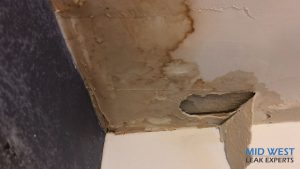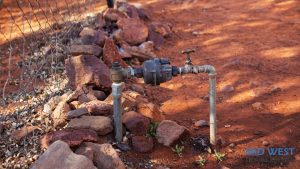Effective Backflow Prevention Protects Your Water Supply
The safety of your drinking water is something you likely take for granted. You turn on the tap, and clean, safe water flows out. However, a dangerous phenomenon called backflow can compromise this safety, introducing harmful contaminants into your property’s water lines and even the public water supply.
Effective backflow prevention is not just a recommendation; it is an essential safeguard for the health of your family, employees, and the entire Central West NSW community. It involves creating a physical barrier that ensures water flows in only one direction: from the mains to your property, and never the other way around. Understanding and implementing proper property backflow protection is a critical responsibility for every property owner.
Understanding the Grave Risks of Water Contamination
When backflow occurs, it reverses the normal flow of water. This can pull water from non-potable sources back into the clean drinking water system. These sources can include irrigation systems treated with pesticides, commercial boilers containing chemicals, or even a simple garden hose left in a puddle of dirty water. The introduction of contaminants like bacteria, chemicals, fertilisers, and industrial waste can lead to serious health issues, ranging from gastrointestinal illnesses to severe poisoning.
For businesses in Orange, Bathurst, or Mudgee, a backflow incident can result in forced shutdowns, significant liability, and irreparable damage to their reputation. Therefore, taking proactive steps to prevent backflow is a crucial measure to protect public health and ensure you meet your legal obligations as a property owner.
How Backflow Contaminates Your Clean Water
Backflow is typically caused by one of two hydraulic conditions: back-siphonage or back-pressure. Both create a scenario where the pressure in your property’s plumbing becomes greater than the pressure in the water main, forcing contaminated water to flow in the wrong direction. Recognising how these situations occur is the first step in implementing effective backflow prevention strategies.
The Danger of Back-Siphonage
Back-siphonage is caused by a sudden drop in pressure in the public water main. This creates a partial vacuum, much like sipping through a straw, that can suck water from your property back into the main supply line. This pressure drop can happen for several reasons, such as a water main break down the street, a fire hydrant being used nearby, or extensive water usage in the area. A common residential example is a garden hose with a spray nozzle attached, left submerged in a bucket of soapy water or a swimming pool. If back-siphonage occurs, the contents of that bucket or pool could be drawn back into your home’s drinking water.

The Threat of Back-Pressure
Back-pressure occurs when the water pressure within a property’s plumbing system is higher than the pressure of the municipal water supply. This condition can forcefully push contaminated water from the property into the public mains. This is a common risk in commercial and industrial settings that use pumps, boilers, or elevated storage tanks. For example, a multi-story building’s water system or a pressurised heating system can generate pressure that overcomes the main supply pressure, creating a significant backflow risk if not properly managed with a backflow prevention device.
Your First Line of Defence is a Prevention Device
The most reliable solution to this problem is the installation of a dedicated backflow prevention device. This is a mechanical plumbing valve assembly installed on your water line that physically stops water from flowing backward. It acts as a one-way gate, ensuring that water can only travel from the city’s supply into your property. The specific type of device required depends entirely on the level of hazard your property presents to the water supply. A professional assessment is necessary to determine the appropriate level of property backflow protection for your specific situation.
Common Types of Backflow Prevention Devices
Choosing the correct backflow prevention device is critical for ensuring compliance and safety. The level of risk associated with your property’s water usage—categorised as low, medium, or high—dictates which type of device is required by local water authorities. Our expert plumbers can assess your needs and recommend the right solution.
- Reduced Pressure Zone (RPZ) Valve: Considered the highest level of protection, an RPZ valve is required for high-hazard situations. It consists of two independent check valves and a pressure-monitored chamber with a relief valve in between. If either check valve fails, the relief valve opens and discharges water, providing a clear visual indication of a problem and preventing any possible contamination.
- Double Check Valve Assembly (DCVA): This device is suitable for medium-hazard applications. It features two independently operating check valves in a series. This redundancy provides a good level of protection should one of the valves fail to seal properly.
- Pressure Vacuum Breaker (PVB): Commonly used for irrigation systems and other applications where there is a risk of back-siphonage but not back-pressure. It must be installed higher than any other outlet on that water line.
- Atmospheric Vacuum Breaker (AVB): This is a simpler device often found on hose bibs and faucets. It provides basic protection against back-siphonage but is not suitable for situations with continuous pressure.

We Help You Choose the Right Device
Navigating the requirements for backflow prevention can be complex. Each local council in the Central West region, from Lithgow to Cowra and Parkes to Forbes, has specific regulations based on the assessed risk of a property. The team at Mid West Leak Experts has extensive experience working with these local authorities. We conduct a thorough site assessment to determine your property’s hazard level and ensure the correct, fully compliant backflow prevention device is selected and installed to provide you with complete peace of mind.
Why Professional Installation Is Non-Negotiable
Installing a backflow prevention device is a specialised task that must be performed by a licensed and accredited plumber. This is not a DIY project. An incorrectly installed device can fail to provide protection, create a new plumbing hazard, or result in costly water damage. Our technicians are fully certified in backflow prevention installation and testing. We ensure that your device is installed according to strict Australian Standards and local council codes, guaranteeing its proper function and your full compliance. Trusting the experts at Mid West Leak Experts means the job is done right the first time, protecting your property and the public water supply.
Ensuring Ongoing Safety with Regular Backflow Testing
A backflow prevention device is a mechanical assembly with internal seals, springs, and moving parts that can wear out, become fouled with debris, or fail over time. Simply having a device installed is not enough; it must be regularly tested to ensure it is functioning correctly. Annual backflow testing is a mandatory requirement for most installed devices across NSW. This yearly check is the only way to verify that your property backflow protection is still effective and that you remain compliant with local water authority regulations. It is a critical component of responsible property management.
The Critical Need for Annual Device Testing
Regular testing is essential for several reasons. Firstly, it confirms that the device’s internal components are working perfectly and will protect against a backflow event. Secondly, it is a legal requirement. Property owners are responsible for ensuring their devices are tested annually by an accredited plumber, with reports submitted to the local council. According to NSW Fair Trading, this annual testing is a key part of maintaining a safe water supply network. Failure to comply can result in fines and legal notices. Finally, it provides documented proof that you are taking proactive steps to protect community health.
Our Comprehensive Backflow Testing Process
Our accredited technicians use a meticulous, step-by-step process for all backflow testing. This ensures every component of your device is checked for correct operation and that you receive accurate, reliable results for your compliance records. We handle the entire process, from testing to submitting the paperwork to your council.
- We begin with a detailed visual inspection of the device, its installation, and the surrounding plumbing to check for any signs of damage or leaks.
- Our team uses state-of-the-art, calibrated differential pressure gauge test kits to measure the performance of the internal check valves and relief valves.
- We test each component under simulated backflow conditions to ensure they hold the required pressure and seal tightly against any reverse flow.
- After successfully completing the test, we tag the device with the test date and technician details and complete a formal Test Report for your records.
- We then submit the compliance report directly to your local water authority on your behalf, ensuring you meet all your regulatory obligations.
Does Your Central West NSW Property Need Protection?
Nearly all commercial and industrial properties require some form of backflow prevention. Many residential properties with specific features also need protection. Understanding your property’s risk level is key. If you operate a business or have certain high-risk water uses at home, you are likely required by law to have a testable backflow prevention device installed. Our team can help you assess your specific situation and determine your obligations.
High-Hazard Commercial and Industrial Sites
Properties that handle chemicals, fluids, or materials that would be highly toxic if they entered the water supply are classified as high-hazard. These sites require the highest level of protection, typically an RPZ valve. Examples include medical or dental clinics, laboratories, manufacturing plants, car washes, food processing facilities, and commercial kitchens. Any connection where contaminants could cause serious illness or death falls into this category.
Medium-Hazard Properties and Systems
A medium-hazard situation is one where the backflow of contaminants would be an annoyance or cause illness but would not be life-threatening. These properties typically require a Double Check Valve Assembly (DCVA). Examples include apartment buildings, properties with large-scale irrigation systems, fire hose reels connected to the potable water supply, and commercial buildings with large boiler systems.
Assessing Risk at Residential Properties
While most standard residential homes are considered low-risk, certain features can elevate the hazard level and require a testable backflow prevention device. These include in-ground swimming pools or spas with an automatic filling system, irrigation systems connected directly to the mains water supply, fire sprinkler systems, and alternative water sources like a rainwater tank that is interconnected with the town water supply via a pump.
The Ultimate Protection of an RPZ Valve
For high-hazard applications, there is no substitute for a Reduced Pressure Zone device, commonly known as an RPZ valve. This sophisticated device provides the most reliable form of backflow prevention available. Its unique design includes two independently acting check valves, just like a DCVA, but with the crucial addition of a hydraulically operated differential pressure relief valve located in the chamber between them. This relief valve is the key to its superior safety. If the pressure drops or the second check valve leaks, the relief valve will automatically open and discharge water to the outside. This action not only prevents any possibility of backflow but also provides an immediate, visible indication that the device has a fault and requires service.

Your Local Experts in Backflow Prevention
At Mid West Leak Experts, we are your local, accredited specialists in all aspects of backflow prevention. From initial risk assessment and device installation to annual backflow testing and council reporting, we provide a complete, end-to-end service. We have an in-depth understanding of the specific requirements of councils across the Central West, ensuring your property is always safe and compliant.
Serving Orange, Bathurst, and All of Central NSW
Our dedicated team proudly serves the entire Central West NSW region. We are the trusted choice for homes and businesses in Orange, Bathurst, Mudgee, Lithgow, Cowra, Parkes, Forbes, and all surrounding areas. We understand the local landscape and provide prompt, reliable service tailored to the needs of our community.
Why Mid West Leak Experts is Your Best Choice
Choosing us for your backflow prevention needs means partnering with a team of accredited, experienced professionals. We use the latest testing equipment to deliver accurate results and provide durable, high-quality installations. We take the hassle out of compliance by managing all the necessary paperwork and submissions to your local council. Our primary commitment is to protect your water, your property, and the health of our community.
Take Action to Ensure Your Water Is Safe
Protecting our clean water supply is a shared responsibility. A single backflow incident can have devastating consequences for public health and the environment. Do not wait for a problem to occur. Be proactive about your property backflow protection. Whether you need a new backflow prevention device installed, or it is time for your annual backflow testing, our expert team is here to help.
We provide professional advice and reliable service to ensure your water remains safe and clean. For a complete assessment and expert backflow services, Enquire Now. For any urgent concerns about your water safety, Call Us at 0422-125-707 today.




